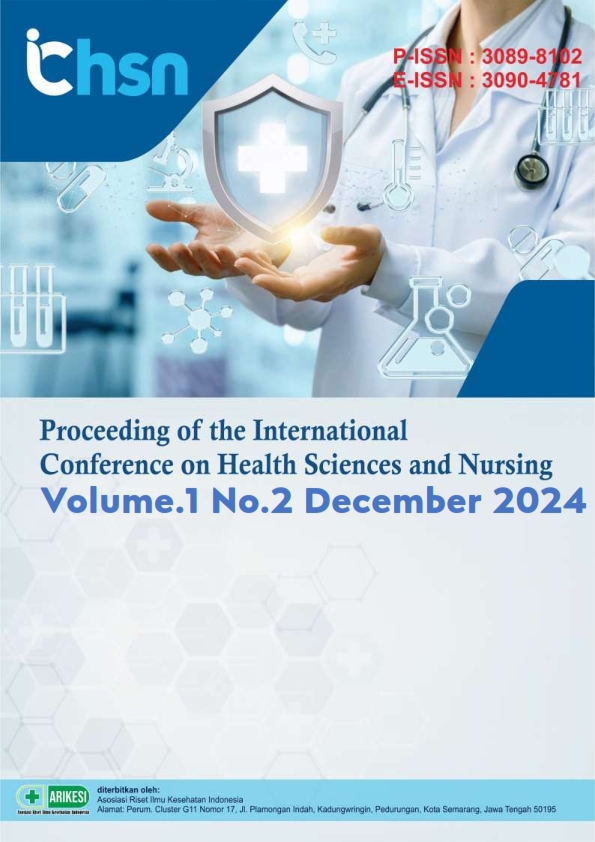Molecular Mechanisms of Carbapenem Resistance Among Enterobacteriaceae Isolated at Teaching Hospital, Batticaloa
Keywords:
Carbapenemases, Enterobacteriaceae, Carbapenem Resistance, blaOXA – 48, PCR AmplificationAbstract
The family Enterobacteriaceae includes a group of Gram negative facultative anaerobes. Members of this family are known to develop resistance to β- lactam antibiotics including carbapenems. Present study was carried out to identify presence of selected genetic determinants of carbapenem resistance in carbapenem non-susceptible Enterobacteriaceae at Teaching Hospital, Batticaloa. Isolates which were resistant or intermediate sensitive to any of carbapenems using routine sensitivity testing (CLSI) were collected from October 2015 to March 2016, sub cultured on blood agar and MacConkey agar and incubated in air at 37 0C for 18 – 24 hours. PCR amplification of blaTEM, blaSHV and blaCTX – M as potential genetic determinants of Extended Spectrum Beta Lactamases (ESBLs) and blaOXA – 48, blaKPC and blaNDM as genetic determinants for carbapenemases was performed. Total of 768 Enterobacteriaceae were isolated during study period and of these 5 were confirmed as resistant to carbapenem group i.e. carbapenem-resistant Enterobacteriaceae (CRE). All five isolates were intermediate resistant or resistant to imipenem, meropenem, ertapenem, ceftazidime, cefotaxime, ciprofloxacin, levofloxacin and aztreonam. Four isolates carried at least one potential genetic determinant of blaCTX – M in 3, blaTEM in 3 and blaSHV in 2 isolates. Four isolates were found to carry at least one of genetic determinants of blaOXA – 48 in 3 and blaNDM in 1.
Downloads
References
Aghazadeh, M., Saffar, H., Moghim, S., Fazeli, H. (2021). Prevalence of carbapenem-resistant Enterobacteriaceae and associated risk factors: A systematic review and meta-analysis. Infection and Drug Resistance, 14, 3053–3067. https://doi.org/10.2147/IDR.S317932
Al-Zahrani, I.A., Alsiri, H.I. (2022). Molecular mechanisms of carbapenem resistance among Gram-negative bacteria in Saudi Arabia. Journal of Infection and Public Health, 15(4), 489–496. https://doi.org/10.1016/j.jiph.2022.02.005
Bassetti, M., Merelli, M., Temperoni, C., Astilean, A. (2009). New antibiotics for bad bugs: Where are we? Annals of Clinical Microbiology and Antimicrobials, 18(1), 1–20. https://doi.org/10.1186/1476-0711-8-1
Bebrone, C. (2013). Metallo-β-lactamases (classification, activity, genetic organization, structure, zinc coordination) and their superfamily. Biochemical Pharmacology, 74(12), 1686–1701. https://doi.org/10.1016/j.bcp.2013.05.008
Chatterjee, D., Sharma, S., Prakash, T. (2022). Insights into the epidemiology of NDM-producing Enterobacteriaceae in India. Microbial Drug Resistance, 28(3), 201–208. https://doi.org/10.1089/mdr.2021.0288
Chen, L., Mediavilla, J.R., Endimiani, A. (2011). Emerging carbapenemases: Past and future. Clinical Microbiology Reviews, 24(3), 477–492. https://doi.org/10.1128/CMR.00024-11
Cheng, A.T., Yang, L., Wu, Y. (2020). Strategies to mitigate carbapenem resistance in Enterobacteriaceae: A clinical perspective. Journal of Clinical Microbiology, 58(10), e01278-20. https://doi.org/10.1128/JCM.01278-20
CLSI. (2015). Performance standards for antimicrobial susceptibility testing; twenty-fifth informational supplement. Clinical Laboratory Standards Institute (CLSI) Document M100-S25.
Cowan, S. T., Steel, K.J. (1993). Manual for the identification of medical bacteria (3rd ed.). Cambridge University Press.
Delmas, J., Robin, F. (2021). Mechanisms of carbapenem resistance in Pseudomonas aeruginosa and Acinetobacter baumannii. Pathogens, 10(9), 1134. https://doi.org/10.3390/pathogens10091134
Gunasekara, T.D. (2015). Extended Spectrum β-Lactamase and carbapenemase producers among enterobacteriaceae: A report from Sri Lanka. Sri Lankan Journal of Infectious Diseases, 6(1), 3236. https://doi.org/10.4038/sljid.v6i1.8110
Gupta, S.K., Mandal, S. (2022). Co-expression of ESBL and carbapenemase genes in clinical isolates of Enterobacteriaceae. Journal of Infection and Chemotherapy, 28(6), 738–745. https://doi.org/10.1016/j.jiac.2022.04.003
Henkhoneng M., Devi, S., Borkakoty, B., Devi, T. (2014). Carbapenemase-producing Gram-negative bacteria: Prevalence and molecular characteristics. International Journal of Antimicrobial Agents, 44(4), 356–360. https://doi.org/10.1016/j.ijantimicag.2014.06.018
Iseri, S. (2008). Metallo-β-lactamase-producing Enterobacteriaceae in clinical settings. Journal of Medical Microbiology, 57(6), 784–787. https://doi.org/10.1099/jmm.0.47781-0
Jacoby, G.A. (2009). AmpC β-lactamases. Clinical Microbiology Reviews, 22(1), 161–182. https://doi.org/10.1128/CMR.00036-08
Jarrad, A.M., Debnath, A., Bernhardt, P.V. (2014). Structural development of metallo-β-lactamase inhibitors. Chemical Reviews, 114(8), 4217–4293. https://doi.org/10.1021/cr400706r
Jayasekara, T., Kaluarachchi, K., Perera, K. (2021). Carbapenemase-producing organisms in Sri Lankan tertiary care hospitals: A review. Sri Lanka Journal of Infectious Diseases, 11(1), 25–32. https://doi.org/10.4038/sljid.v11i1.8341
Jayatilleka, S. (2014). Carbapenem-resistant Klebsiella pneumoniae outbreaks in Sri Lanka. Journal of Global Antimicrobial Resistance, 2(3), 145–147. https://doi.org/10.1016/j.jgar.2014.05.005
Khan, A.U., Gupta, R. (2020). Decoding carbapenem resistance: Genetic and phenotypic approaches. Current Microbiology, 77(3), 512–518. https://doi.org/10.1007/s00284-019-01760-6
Livermore, D.M. (1996). β-lactamases in laboratory and clinical resistance. Clinical Microbiology Reviews, 8(4), 557–584. https://doi.org/10.1128/CMR.8.4.557
Magiorakos, A.P., Srinivasan, A., Carey, R.B., Carmeli, Y. (2012). Multidrug-resistant, extensively drug-resistant and pandrug-resistant bacteria. Clinical Microbiology and Infection, 18(3), 268–281. https://doi.org/10.1111/j.1469-0691.2011.03570.x
Maji, S., Das, A. (2022). The interplay of resistance determinants in carbapenem-resistant Enterobacteriaceae. PLoS One, 17(7), e0269265. https://doi.org/10.1371/journal.pone.0269265
Monstein, H.J., Östholm-Balkhed, Å., Nilsson, M.V., Nilsson, M., Dornbusch, K., Nilsson, L.E. (2007). Multiplex PCR amplification assay for the detection of blaSHV, blaTEM and blaCTX-M genes in Enterobacteriaceae. Apmis, 115(12), 1400–1408. https://doi.org/10.1111/j.1600-0463.2007.00722.x
Naas, T., Cuzon, G., Bogaerts, P. (2011). New carbapenemase genes and unusual resistance mechanisms. Clinical Microbiology and Infection, 17(6), 681–688. https://doi.org/10.1111/j.1469-0691.2011.03570.x
Nair, R.R., Patel, P., Gupta, V. (2021). Epidemiology and molecular characterization of CRE in India: A national perspective. Antibiotics, 10(5), 603. https://doi.org/10.3390/antibiotics10050603
Parvez, M., Khan, M. (2022). Evaluation of carbapenem-resistant Enterobacteriaceae and its public health implications. Asian Journal of Medical Sciences, 13(4), 50–56. https://doi.org/10.3126/ajms.v13i4.42192
Poirel, L., Walsh, T.R., Cuvillier, V., Nordmann, P. (2011). Multiplex PCR for detection of acquired carbapenemase genes. Diagnostic Microbiology and Infectious Disease, 70(1), 119–123. https://doi.org/10.1016/j.diagmicrobio.2010.12.002
Pravin, T., Michelle, M. (2013). The prevalence of carbapenemase-producing Enterobacteriaceae in India. Journal of Infection in Developing Countries, 7(2), 106–111. https://doi.org/10.3855/jidc.2416
Prescott, J.F., Kusmierski, A. (2007). Mechanisms of antibiotic resistance in bacteria. Canadian Veterinary Journal, 48(1), 23–26.
Rashid, R., Siddiqui, M., Ali, N. (2021). Prevalence and resistance profile of carbapenem-resistant Gram-negative pathogens. Frontiers in Microbiology, 12, 641376. https://doi.org/10.3389/fmicb.2021.641376
Santos, D.F., Almeida, C. (2023). Innovations in molecular methods for carbapenem resistance detection. Clinical Microbiology Reviews, 36(3), e00152-22. https://doi.org/10.1128/CMR.00152-22
Walsh, T.R., Toleman, M.A., Poirel, L. (2002). Metallo-β-lactamases: The quiet before the storm? Clinical Microbiology Reviews, 15(3), 566–591. https://doi.org/10.1128/CMR.15.3.566-591.2002
Wang, Z., Shen, Y., Liu, D. (2020). Co-resistance patterns in carbapenem-resistant Enterobacteriaceae: A global perspective. Journal of Infection, 81(5), 690–697. https://doi.org/10.1016/j.jinf.2020.07.011
WHO. (2023). Antimicrobial resistance: Global report on surveillance. World Health Organization. https://www.who.int/amr
Zhao, J., Li, X., Sun, X. (2023). Current trends in the management of CRE infections: A clinical overview. Antibiotics, 12(3), 326. https://doi.org/10.3390/antibiotics12030326







